Doenjang and miso, two traditional fermented soybean pastes, have been staples in Asian cuisine for centuries. But which one is right for you? This article will dive deeper into doenjang vs miso and explore their origins, ingredients, flavors, and uses.
Understanding the differences and similarities between these two powerhouse condiments allows you to make informed choices when adding depth and umami to your dishes.
So, let’s dive in and discover the world of doenjang vs miso!
Key Takeaways
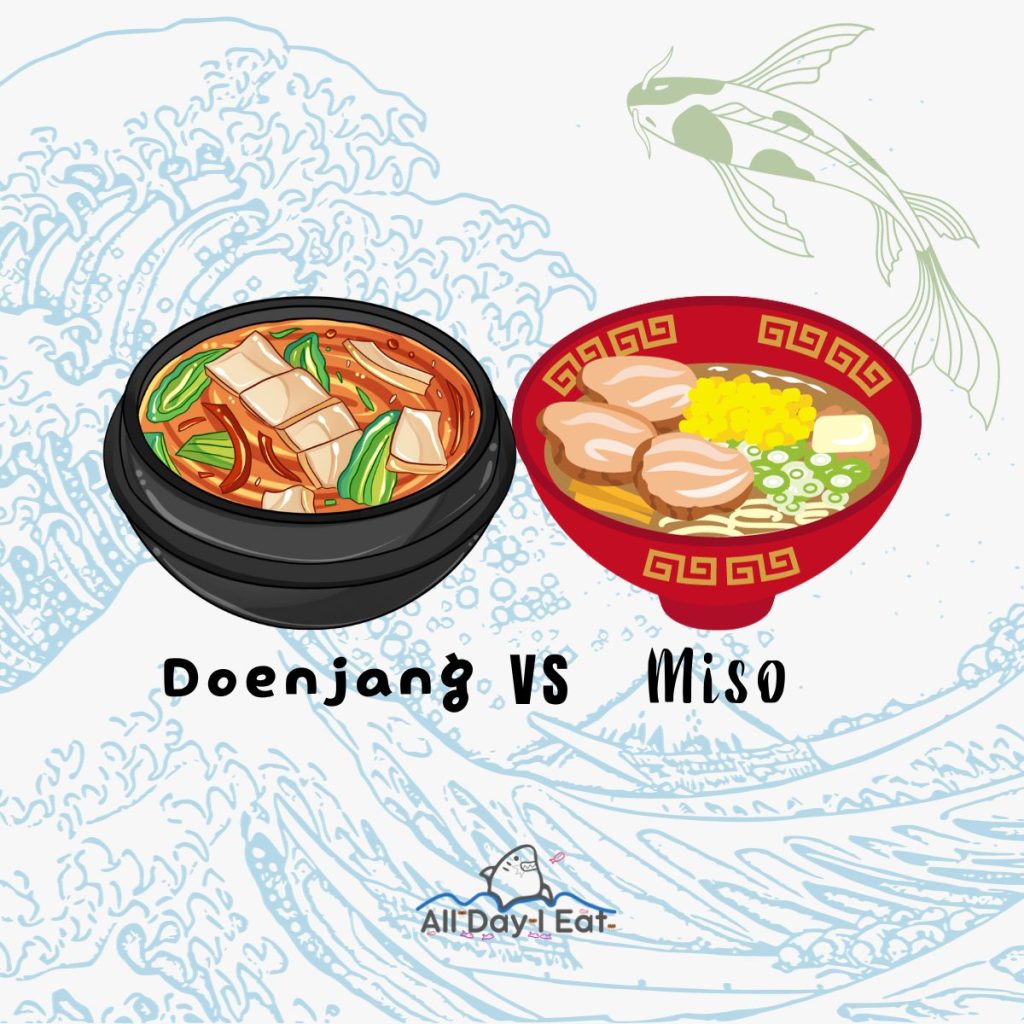
- Doenjang is a traditional Korean soybean paste that dates back over 2,000 years, making it one of the oldest fermented foods in Korea.
- Miso originated in China and spread to Japan, becoming a staple in Japanese cuisine and showcasing the rich culinary traditions of Japan.
- Doenjang is made using unpeeled soybeans, while miso often uses peeled soybeans. Both are fermented, but doenjang ferments for several months while miso ferments for a few weeks.
- Doenjang has a rich, deep umami flavor with notes of earthiness and nuttiness, while miso has a milder and sweeter flavor with hints of sweetness and subtle tanginess. Both are versatile and used in a wide range of dishes.
Doenjang vs Miso: The Difference (Quick Answer)
Doenjang and miso are both traditional fermented soybean pastes used in Korean and Japanese cuisines. They differ in flavor and consistency, with doenjang being stronger and thicker than miso.
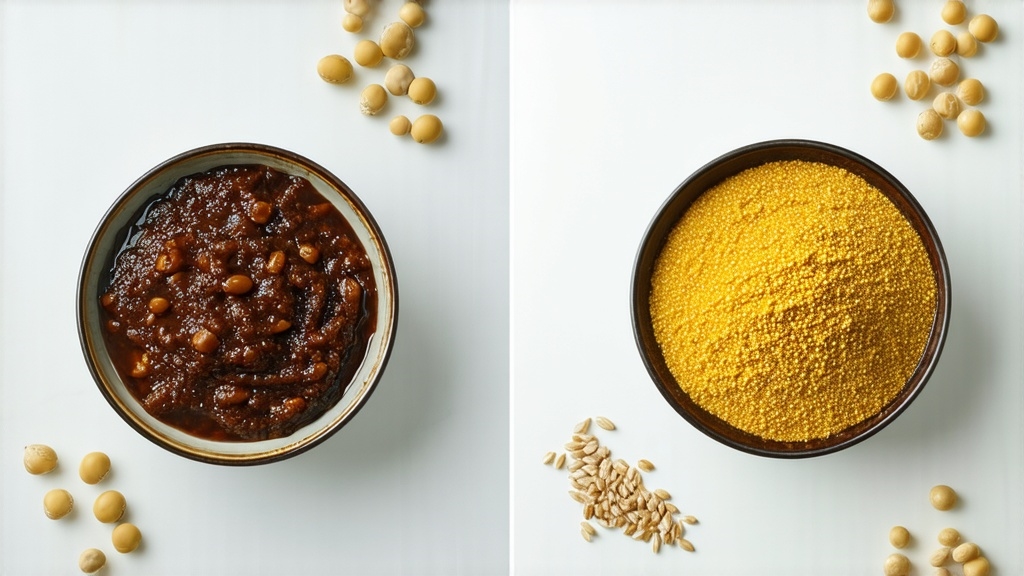

Doenjang vs Miso: Origins and Cultural Significance

When comparing the origins and cultural significance of doenjang vs miso, you’ll discover the fascinating histories and unique cultural roles these fermented bean pastes have played in their respective countries.
Doenjang, a traditional Korean soybean paste, dates back over 2,000 years and is considered one of the oldest fermented foods in Korea. It’s deeply rooted in Korean cuisine and is often called the ‘soul of Korean food.’ Doenjang isn’t only used as a seasoning in various dishes and as a base for making other sauces and soups.
On the other hand, miso originated in China and later spread to Japan, where it has become a staple in Japanese cuisine. It has a milder taste than doenjang and is commonly used in miso soup, marinades, and dressings.
Both doenjang and miso hold a significant place in their respective cultures, showcasing the rich culinary traditions of Korea and Japan.
Doenjang vs Miso: Ingredients and Production Methods
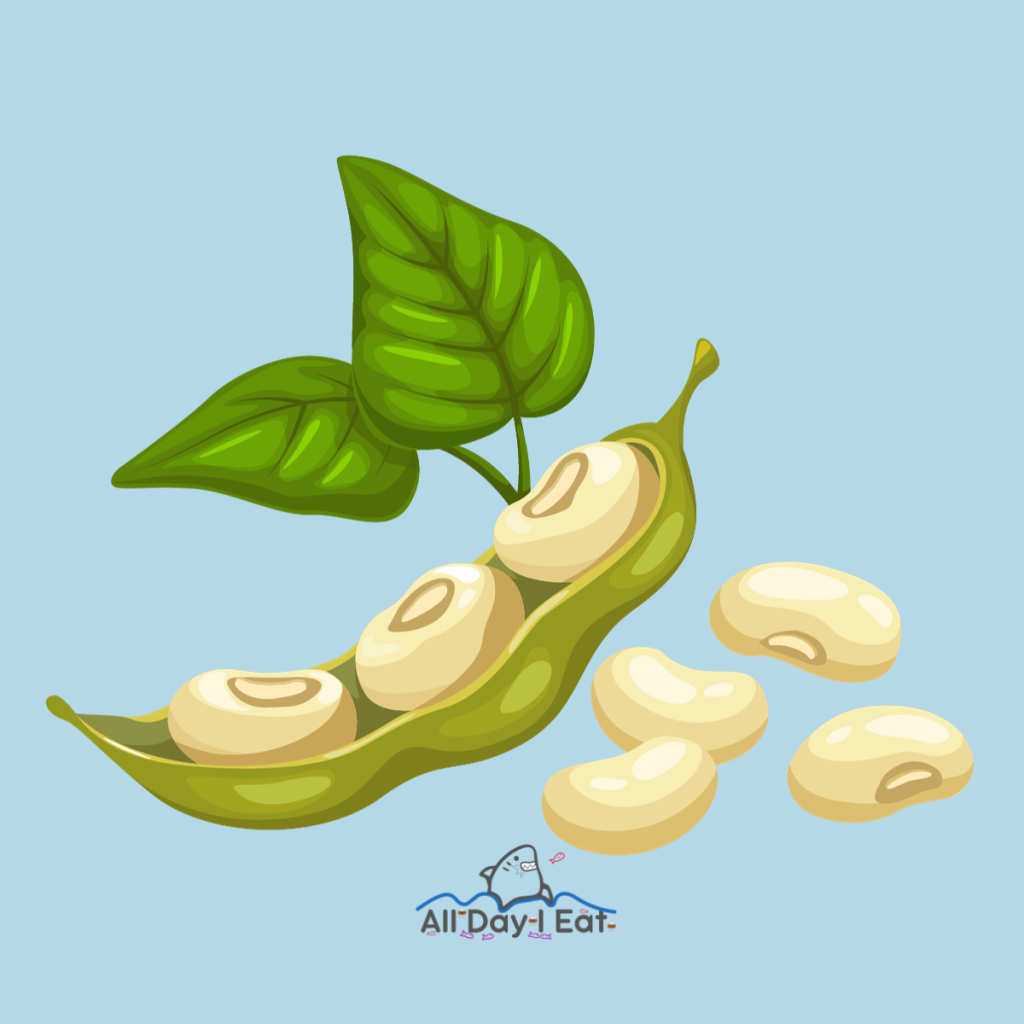
To understand the differences of Doenjang vs Miso, let’s delve into their ingredients and production methods.
Doenjang is a traditional Korean fermented soybean paste, while Miso is a Japanese fermented soybean paste. The main ingredient in both is soybeans, but the types of soybeans used can vary. Doenjang typically uses unpeeled soybeans, while Miso often uses peeled soybeans.
The production methods also differ. For Doenjang, the soybeans are boiled, mashed, and mixed with salt and a fermentation starter called meju. The mixture is then fermented for several months. In contrast, Miso involves cooking the soybeans, adding a fermentation starter called koji, salt, and sometimes other ingredients, and fermenting for a shorter period, usually a few weeks.
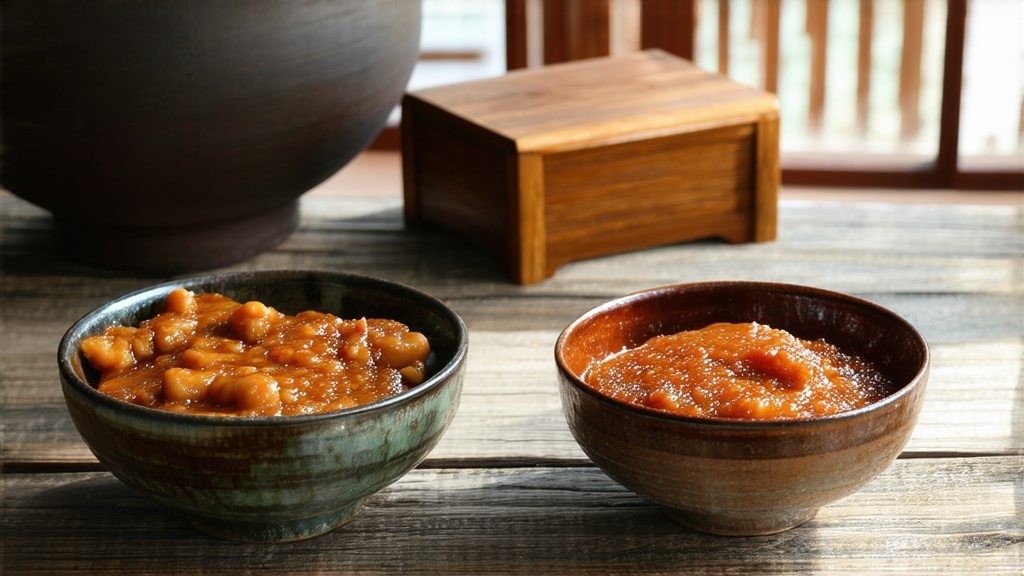

These differences in ingredients and production methods give Doenjang and Miso their distinct flavors and characteristics.
Doenjang vs Miso: Flavor Profiles and Taste Differences
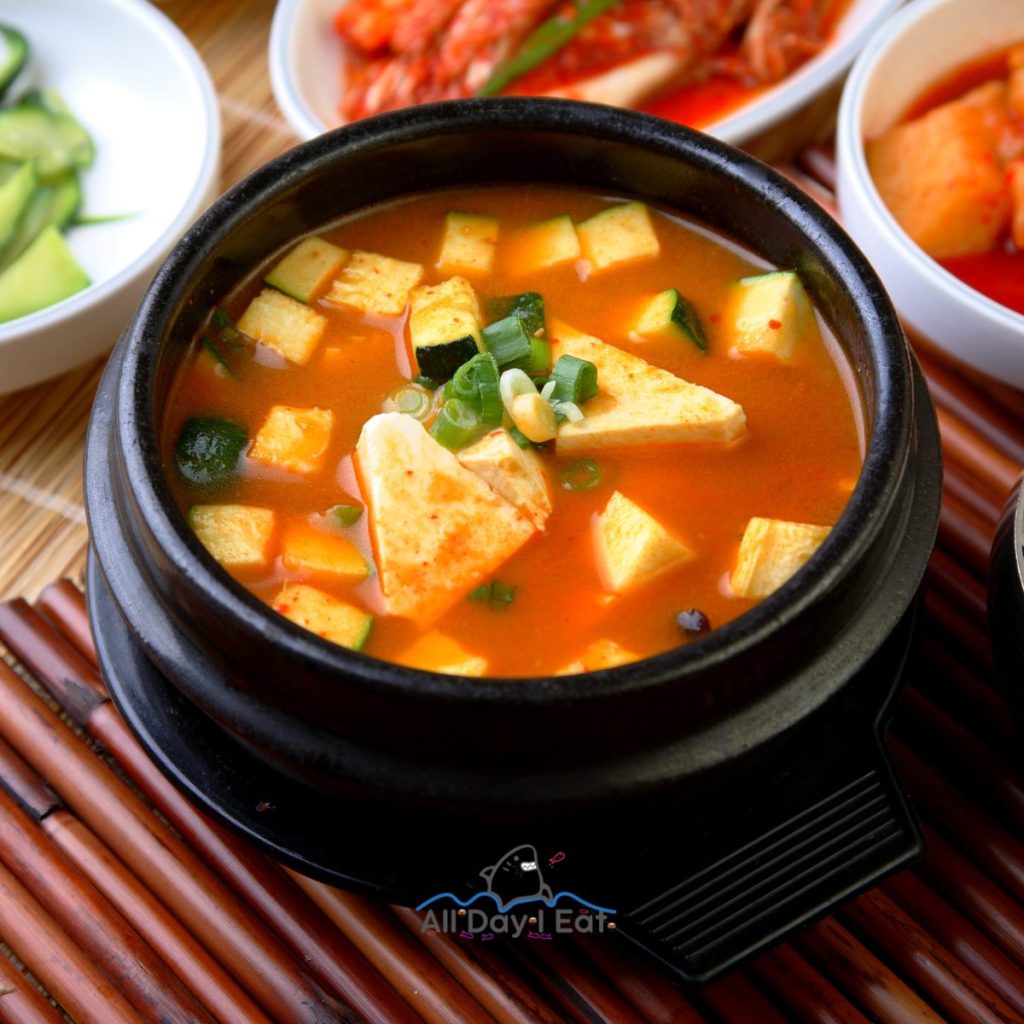
Now, let’s explore the flavor profiles and taste differences between Doenjang and Miso.
- Doenjang: This traditional Korean soybean paste has a rich, deep, umami flavor with a slightly salty and fermented taste. It offers complex notes of earthiness and nuttiness, providing a robust and hearty profile.
- Miso: Originating from Japan, miso is also a fermented soybean paste with a milder and sweeter flavor than Doenjang. It has a delicate balance of saltiness and umami, with hints of sweetness and a subtle tanginess.
- Doenjang: The flavor of Doenjang is more pronounced, making it ideal for dishes that require a bold and savory taste. It can add depth to stews, soups, and marinades.
- Miso: Miso’s mildness makes it versatile and suitable for various dishes. It can be used in soups, dressings, glazes, and even desserts, providing a gentle yet flavorful touch.
Understanding the flavor profiles and taste differences between Doenjang and Miso can help you choose the right ingredients to enhance the taste of your dishes.
Doenjang vs Miso: Culinary Uses and Recipe Adaptations

You can explore various culinary uses and adapt recipes incorporating Doenjang and Miso. These fermented soybean pastes are versatile ingredients that can elevate the flavor of a wide range of dishes. Whether you’re making soups, marinades, dressings, or stir-fries, both Doenjang and Miso can add depth and complexity to your recipes.
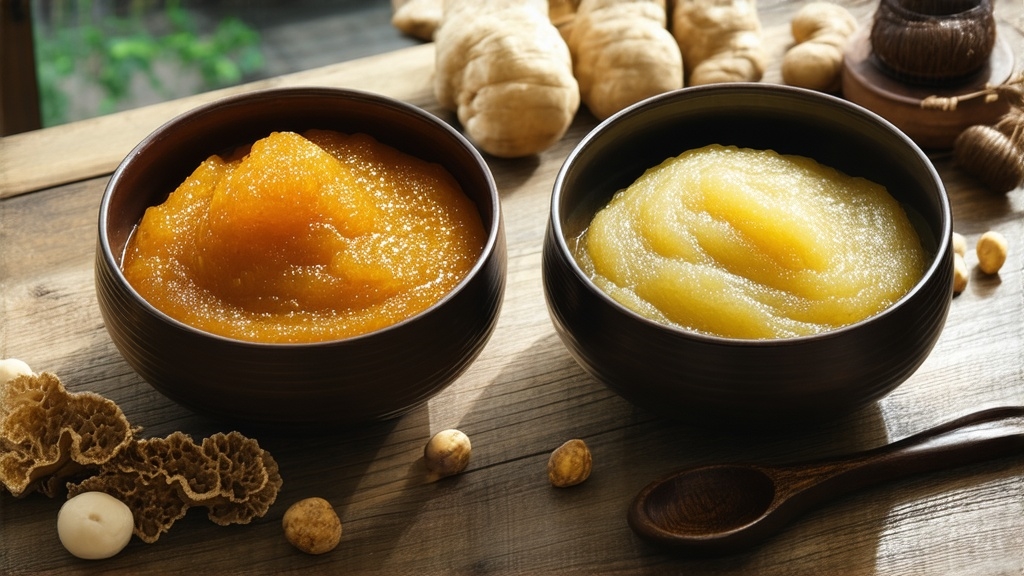

Here is a table showcasing some examples of culinary uses and recipe adaptations for Doenjang and Miso:
| Culinary Uses | Doenjang | Miso |
|---|---|---|
| Soup base | Doenjang jjigae (Korean soybean paste stew) | Miso soup |
| Marinade | Doenjang chicken | Miso-glazed salmon |
| Dressing | Doenjang vinaigrette | Miso sesame dressing |
| Stir-fry sauce | Doenjang bulgogi | Miso glazed vegetables |
Doenjang vs Miso: Health Benefits and Nutritional Comparison
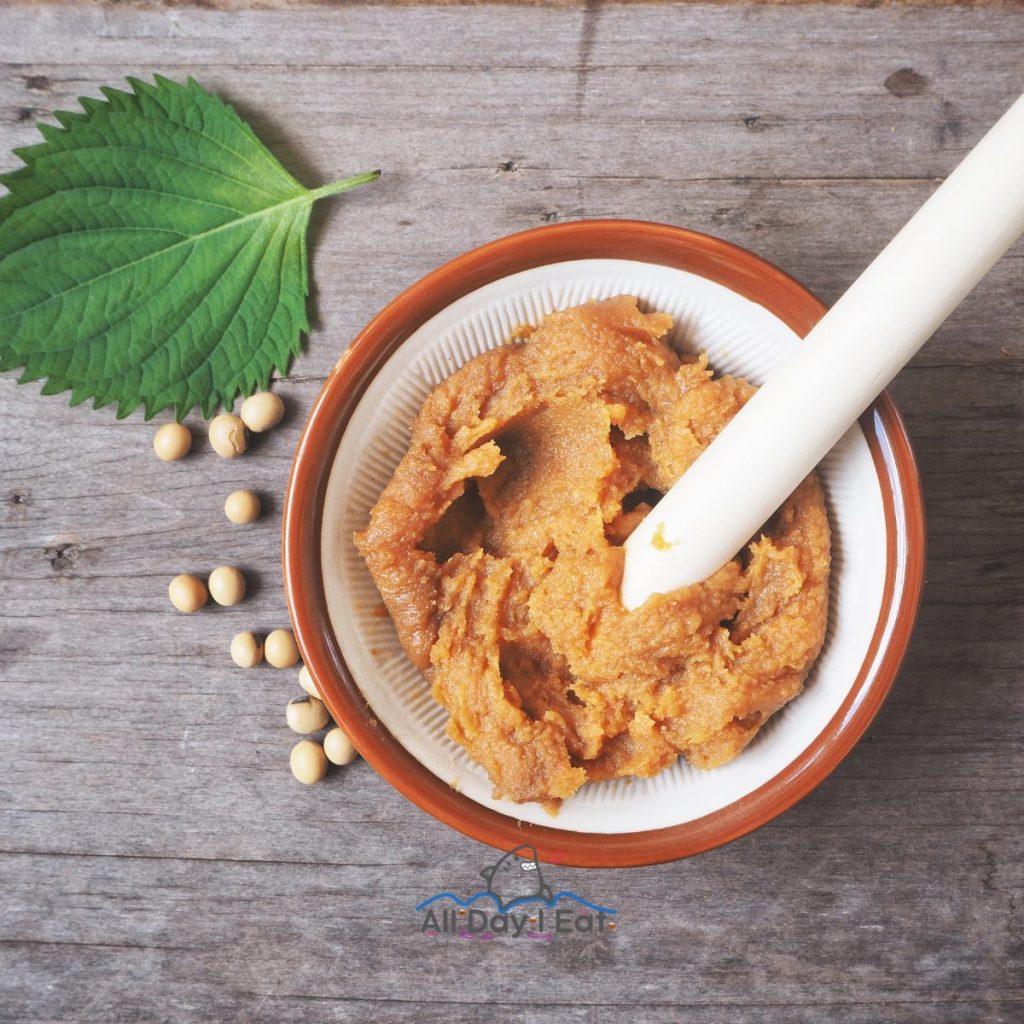
As you delve into the health benefits and nutritional comparison of Doenjang and Miso, it’s important to consider their respective qualities and how they can contribute to a well-rounded diet.
Here are some key points to consider:
- Both Doenjang and Miso are fermented soybean pastes that offer a range of health benefits.
- They’re rich in probiotics, which promote a healthy gut and improve digestion.
- Both pastes contain essential amino acids that support muscle growth and repair.
- Doenjang and Miso are excellent sources of vitamins and minerals, including vitamin B12, iron, and calcium.


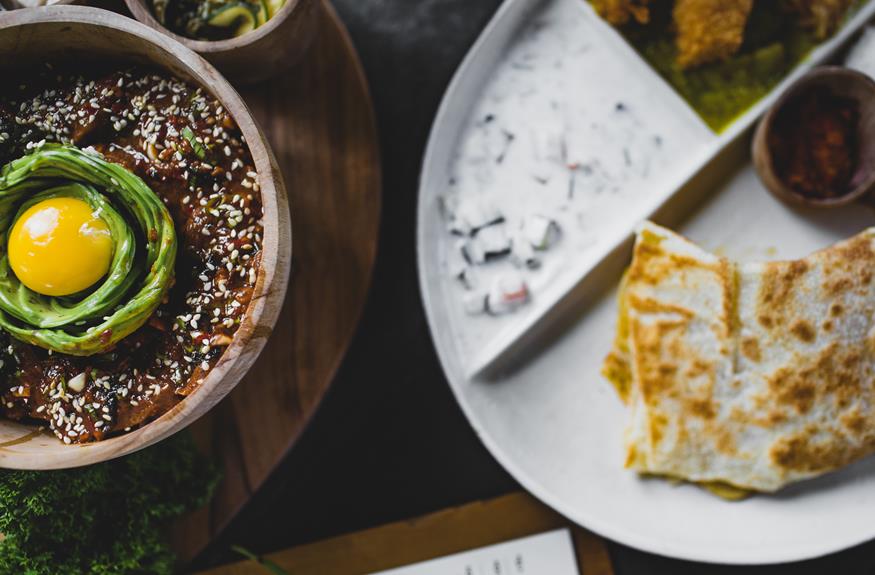


Konnichiwa! (Hello!) I'm Pat Tokuyama, a Japanese tofu cookbook author, who travels for music, food, and adventure. If you like Japanese tea, checkout some of the newestorganic japanese tea, matcha bowls and noren and more!
** Curious about the Plant Based Japanese Cooking Club? ** Learn more here!